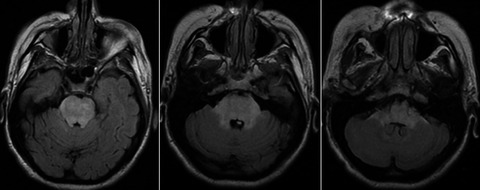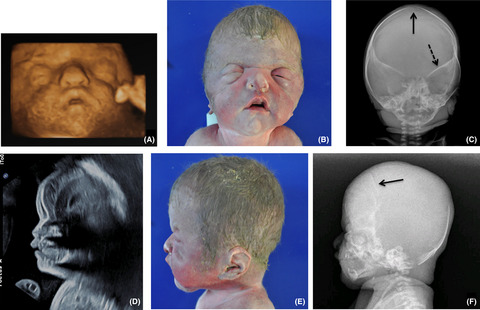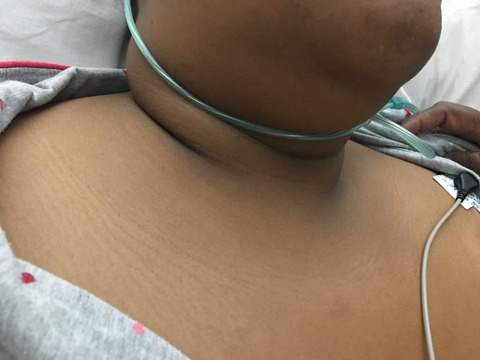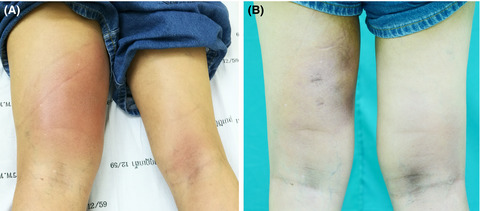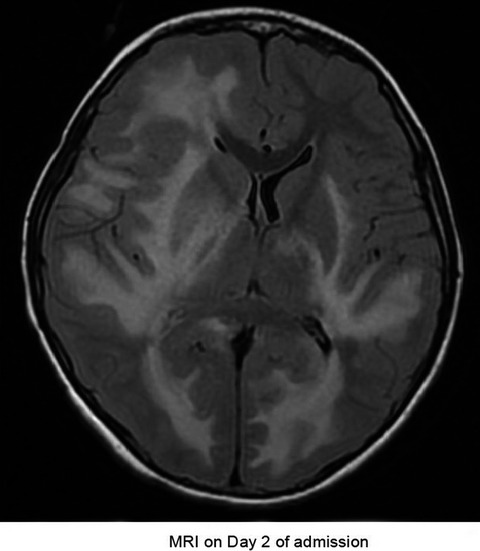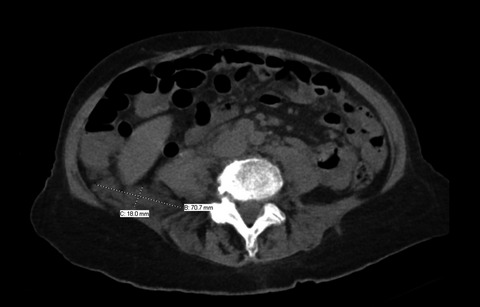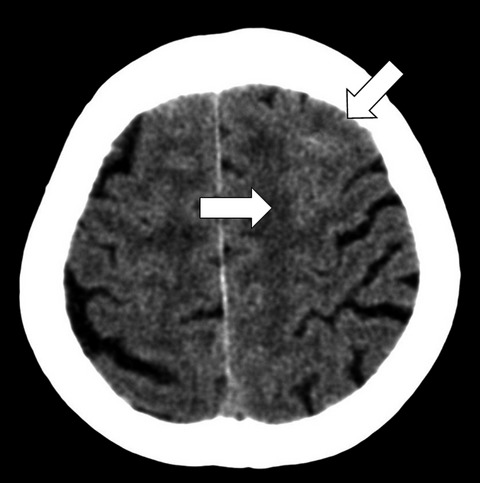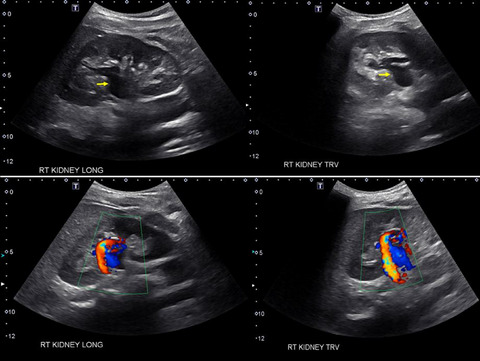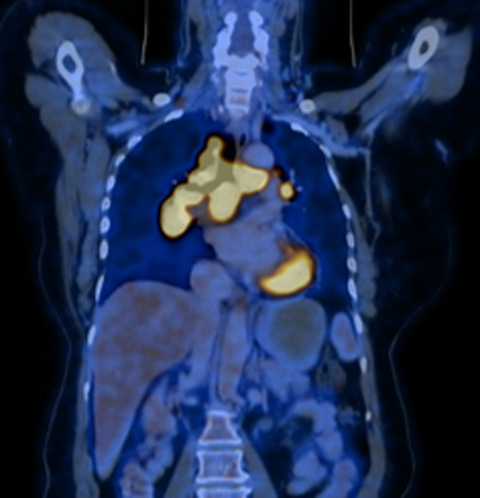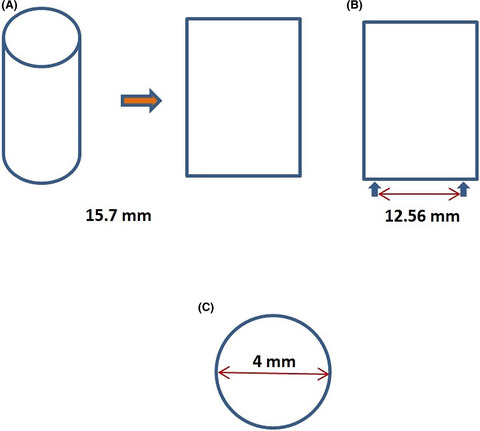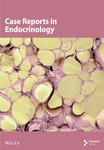Journal list menu
Export Citations
Download PDFs
ISSUE INFORMATION
CASE REPORTS
Xylitol toxicosis and serotonin-like syndrome occurring simultaneously in a dog secondary to ingestion of Natrol 5-HTP Fast Dissolve Tablets
- Pages: 5-10
- First Published: 08 November 2018
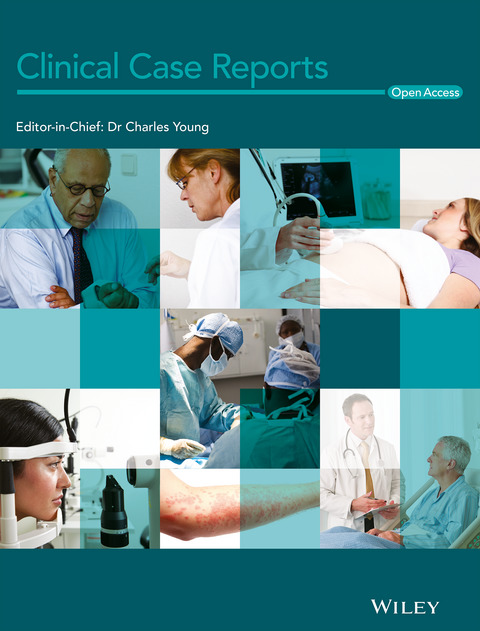
Xylitol and serotonergic compounds are included in the manufacture of numerous over-the-counter products. Both compounds have been documented to cause toxicosis in dogs. This report details the first case of simultaneous xylitol toxicosis and serotonin-like syndrome in a dog, secondary to ingestion of a single over-the-counter product.
Herpes hepatitis as a complication of total abdominal hysterectomy; an unusual complication of abdominal instrumentation
- Pages: 11-14
- First Published: 08 November 2018
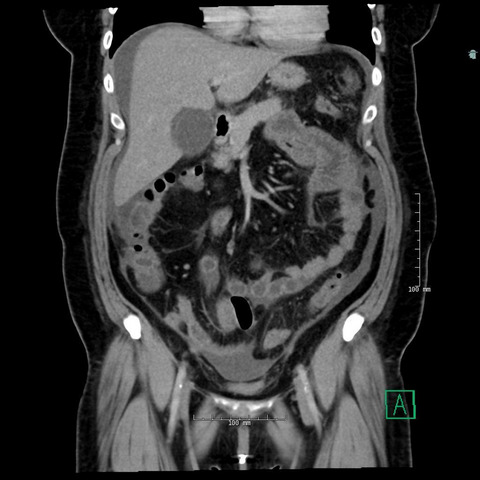
Herpes simplex virus hepatitis is a rare but potentially fatal disease without early intervention. Impaired immunity is a major predisposing risk factor but infection in immunocompetent individuals is not unheard of. Diagnosis is complicated by its rarity and nonspecific signs and symptoms on presentation. Identification by liver biopsy is often limited due to concurrent coagulopathy. Early and aggressive treatment is centered on antiviral therapy with acyclovir. We present a case of herpes hepatitis in an immunocompetent woman following abdominal instrumentation.
Temple syndrome diagnosed in an adult patient with clinical autism spectrum disorder
- Pages: 15-18
- First Published: 08 November 2018
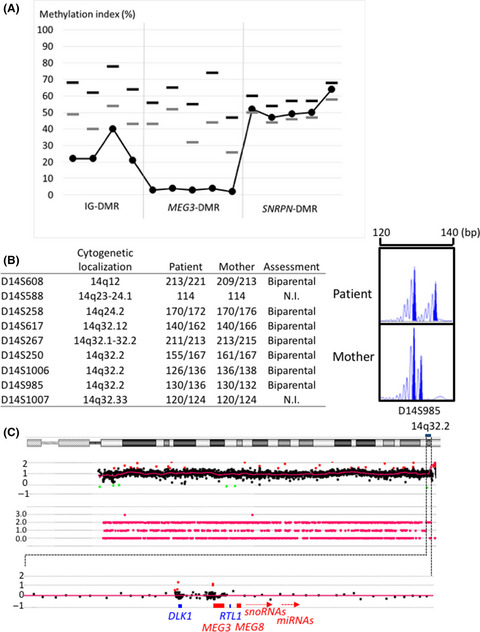
Temple syndrome (TS14) leads to growth failure, precocious puberty, and diabetes mellitus. However, the long-term prognosis, including the development of social behavior in TS14 patients, remains unclarified. We report the clinical course of a male patient with autism spectrum disorder that received a diagnosis of TS14 at 33 years of age.
Impact of hyperprolactinemia in a patient with polyautoimmunity
- Pages: 19-23
- First Published: 09 November 2018
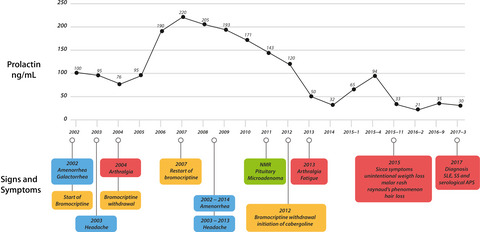
Hyperprolactinemia has been proposed as a triggering factor for autoimmune diseases. The increased levels of prolactin could induce an abnormal immune response. Herein, we present a patient with hyperprolactinemia who developed polyautoimmunity. Patient's symptoms were associated with slightly raised levels of prolactin (20-40 ng/mL) and administration of dopaminergic agonists.
Clinically silent indolent T-cell leukemia
- Pages: 24-26
- First Published: 10 November 2018
Massive thymic hyperplasia in a 15-month-old boy: Case report and literature review
- Pages: 27-31
- First Published: 10 November 2018
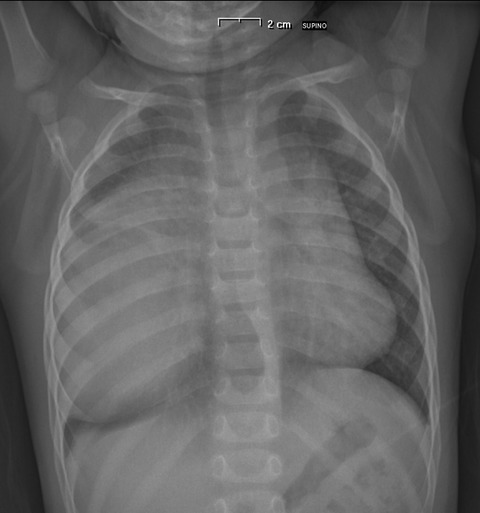
A surgical approach is the choice in young infants with MTH, who are furthest from the time of physiological involution of the thymus, and when the thymus achieves the largest relative size, a surgical approach is the choice. Steroid therapy has been shown to be ineffective (4, 9, 16, 18-20). No surgical complications have been reported, and the outcome is excellent. Recurrence has been seen in only one case.
Isolated pan-pontine posterior reversible encephalopathy syndrome in a patient with uncontrolled hypertension
- Pages: 32-36
- First Published: 11 November 2018
Intraoperative diagnosis of an unsuspected ruptured left ventricular aneurysm using transesophageal echocardiography: A case report
- Pages: 37-39
- First Published: 11 November 2018
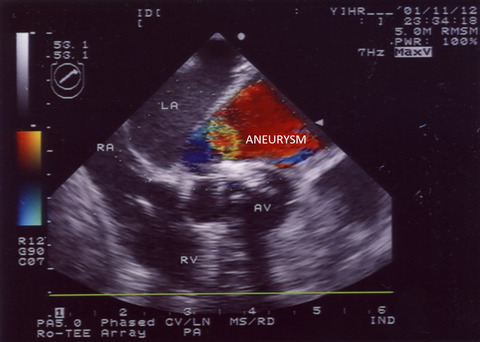
Transesophageal echocardiography (TEE) enables a more accurate visualization of left ventricular posterior aneurysms than transthoracic echocardiography due to the close proximity of the esophagus to the posterior ventricular wall. Therefore, TEE is essential for the accurate diagnosis of posterior aneurysm, particularly in urgent settings where preoperative assessments may be insufficient.
Rhomboid blepharoplasty and cryotherapy for the treatment of a squamous cell carcinoma on the lower eyelid in a horse
- Pages: 40-46
- First Published: 11 November 2018
Adult renal sarcoma: A rare case of recurrence 13 years after initial resection
- Pages: 47-50
- First Published: 11 November 2018
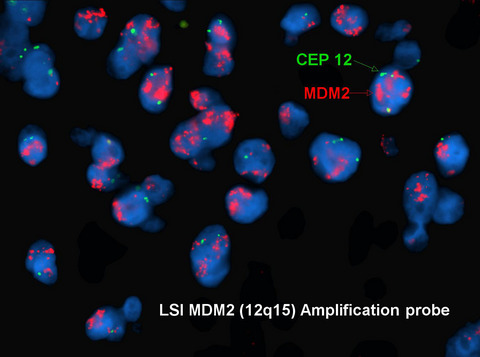
Renal sarcoma is a rare and aggressive malignancy without proper guidelines for treatment. Due to the aggressiveness of this disease and the potential for recurrence, we believe that extensive surgical resection with healthy margins may be the best option to treat this condition during both initial resection and resection of the recurrent lesion. Clinical follow-up is also important to monitor for tumor recurrence.
Congenital glucose-galactose malabsorption: A case report with a novel SLC5A1 mutation
- Pages: 51-53
- First Published: 11 November 2018
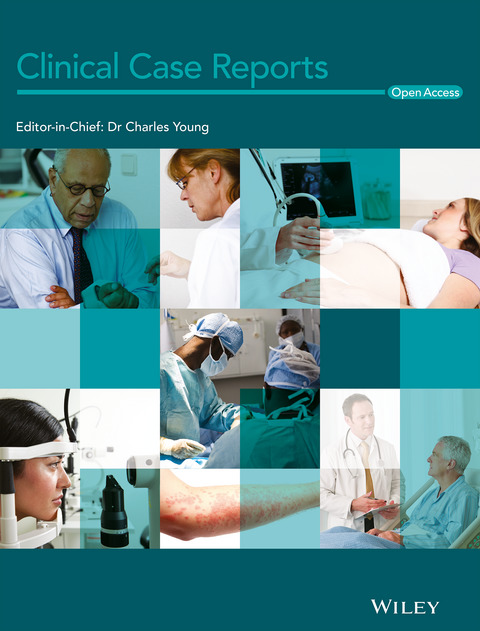
A three-day-old newborn girl presented with decreased feeding and dehydration. She was sick and in shock. She had renal impairment and hypernatremia. With the resumption of breast feeding, she developed watery stools and hypernatremia. Glucose-Galactose Malabsorption was suspected and confirmed by the presence of a likely pathogenic homozygous variant in SLC5A1.
Variable phenotypic expression of Apert syndrome in monozygotic twins
- Pages: 54-57
- First Published: 11 November 2018
Retrospective longitudinal study of osteoporosis in adults with recessive dystrophic epidermolysis bullosa
- Pages: 58-63
- First Published: 12 November 2018
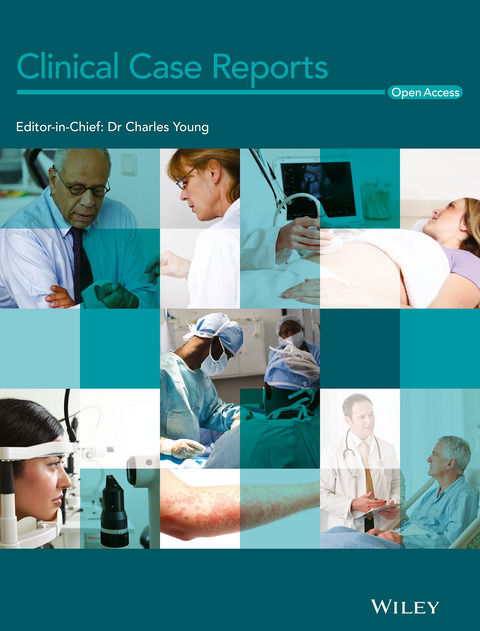
This retrospective study looks at bone mineral density of people with recessive dystrophic epidermolysis bullosa as assessed by dual-energy x-ray absorptiometry. Data were collected in 34 patients aged 16-35 years. Statistical analysis showed immobility, low body mass index, and pubertal delay was associated with osteoporosis.
A patient with solid gynecologic cancer causing lactic acidosis, severe hypercalcemia, and hypoglycemia
- Pages: 64-70
- First Published: 12 November 2018
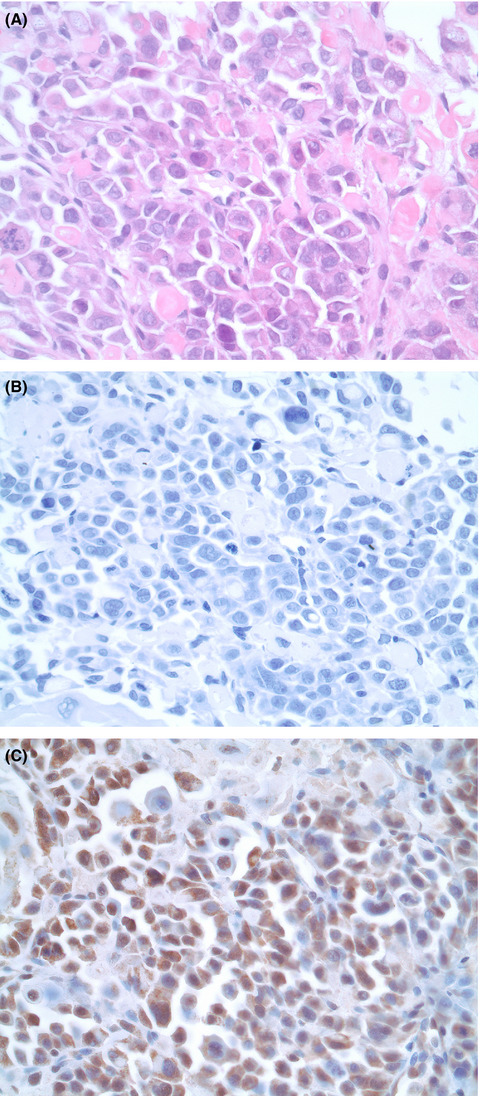
Though rare in cervical cancer patients, paraneoplastic syndrome usually presents with several endocrine and hormonal symptoms. Knowledge of the pathophysiology that underlies these abnormalities is beneficial to diagnosis and treatment. An interdisciplinary approach and test analysis prior to initiating specific treatment is recommended, though prognosis appears poor in advanced cases.
Acute-on-chronic food protein-induced enterocolitis syndrome in an exclusively breast-fed infant
- Pages: 71-73
- First Published: 13 November 2018
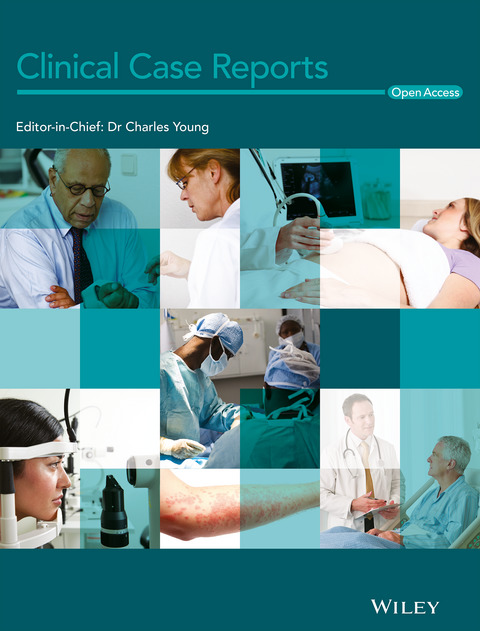
Food protein-induced enterocolitis syndrome (FPIES) is a non-IgE-mediated gastrointestinal food hypersensitivity disorder, typically provoked by cow's milk or soy in formula-fed infants. This case shows that diagnosis of FPIES should be suspected in exclusively breast-fed infants and pediatricians should be suspicious of this in infants with shock and sepsis.
Cataract surgery with implantation of a high-add intraocular lens LENTIS® MAX LS-313 MF80 in end-stage, age-related macular degeneration: A case report of magnifying surgery
- Pages: 74-78
- First Published: 13 November 2018
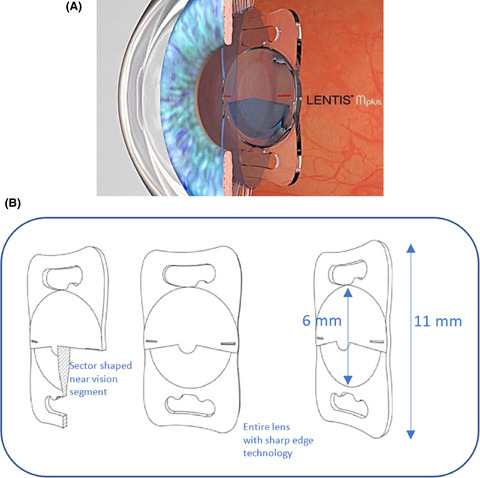
A new treatment option for cataracts and advanced ARMD: the simultaneous intravitreal injection of anti-vascular endothelial growth factor and implantation of a high-add IOL. We believe major opportunities arise from a new subcategory in cataract surgery—called magnifying surgery (MAGS). Our case proves the potential of this brand-new technology.
Polyglandular syndrome type 2 in a Mexican family and its association with human leukocyte antigen
- Pages: 79-82
- First Published: 13 November 2018
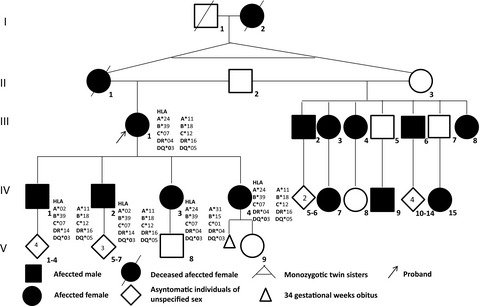
The evaluation of first-degree family members is very important to detect additional cases of polyglandular autoimmune syndrome type 2. The genetic evaluation of human leukocyte antigen (HLA) may be useful in the study of this syndrome. This study is the first report of an HLA study of this syndrome in a Mexican family.
Twenty-four-hour continuous and remote monitoring of respiratory rate using a medical radar system for the early detection of pneumonia in symptomatic elderly bedridden hospitalized patients
- Pages: 83-86
- First Published: 13 November 2018
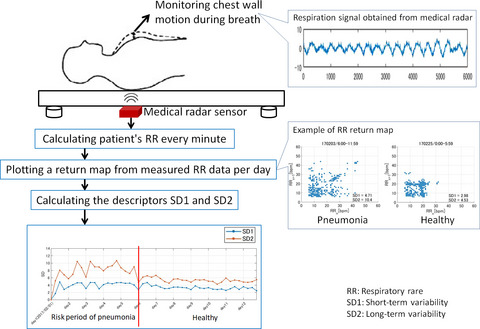
Respiratory rate is often measured manually and discontinuously by counting of chest wall movements in routine clinical practice. We introduce a novel approach to investigate respiration dynamics using a noncontact medical radar system for identifying patient at risk of infection. The system enables early detection of pneumonia in bedridden hospitalized patients.
Α very rare case of De Garengeot’s hernia: Acute appendicitis within a femoral hernia
- Pages: 87-89
- First Published: 16 November 2018
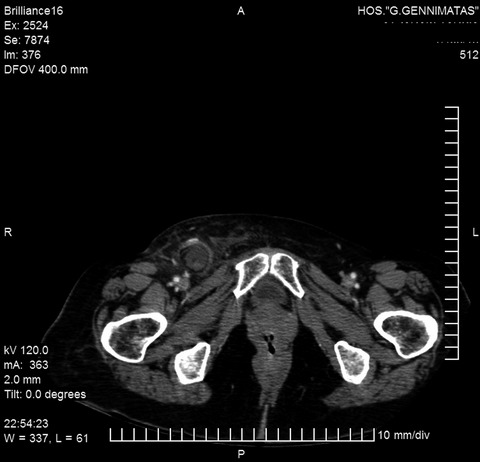
De Garengeot's hernia is a rare clinical entity. Appropriate and acute diagnosis in emergency basis is challenging (usually misdiagnosed as incarcerated femoral hernia), and the surgical management varies from case to case. This report emphasizes the importance of including De Garengeot's hernia in the differential diagnosis of incarcerated groin hernias and the need to establish a well-defined strategy regarding surgical management options.
Counting-based cell-free DNA screening test fails to identify triploidy—A case report
- Pages: 90-93
- First Published: 19 November 2018
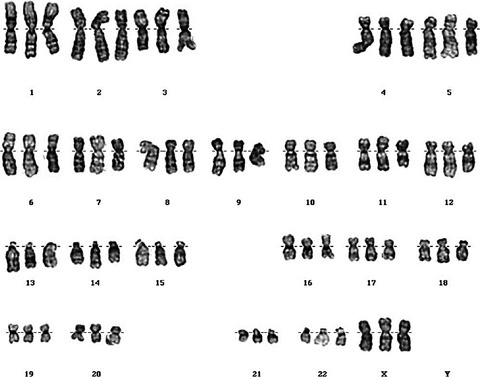
Although noninvasive prenatal testing (NIPT) is a good test with high sensitivity and specificity for trisomy 21, 18, and 13, it remains a screening test and cannot be used for diagnostic purposes. It is important to consider the outcomes of this test and interpret the results and offer consultation accordingly.
Clinical and magnetic resonance imaging findings of a cerebellar medulloblastoma in a heifer
- Pages: 94-99
- First Published: 19 November 2018
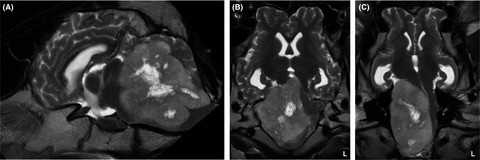
Reports of medulloblastoma in cattle are scarce; however, this neoplasm should be included as a differential diagnosis in cases of cerebellar or central vestibular signs in young cattle. The MRI appearance of the medulloblastoma reported here, previously unreported in cattle, consisted of a T1-weighted hypointense and T2-weighted heterogeneously hyperintense intra-axial mass.'
Therapy-related acute myeloid leukemia after chemotherapy in extensive disease-small cell lung cancer
- Pages: 100-103
- First Published: 19 November 2018
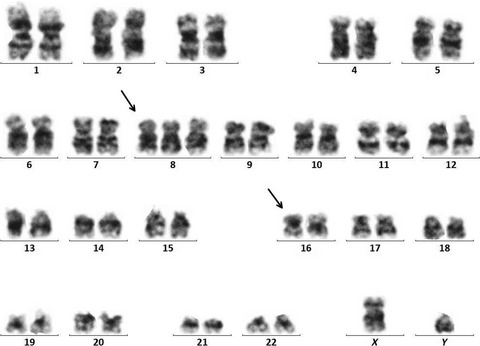
We experienced therapy-related acute myeloid leukemia (t-AML) in a patient with extensive disease-small cell lung cancer (ED-SCLC). This case is rare and has educational message because ED-SCLC has a poor prognosis and often cannot survive until developing therapy related hematological malignancy. Furthermore this case had unique chromosomal abnormalities. With recent advances in chemotherapy and radiotherapy, the prognosis of lung cancer has improved, while t-AML has been increasing in frequency.
Complication of solar branding: Report of a case and the review of the literature
- Pages: 104-106
- First Published: 20 November 2018
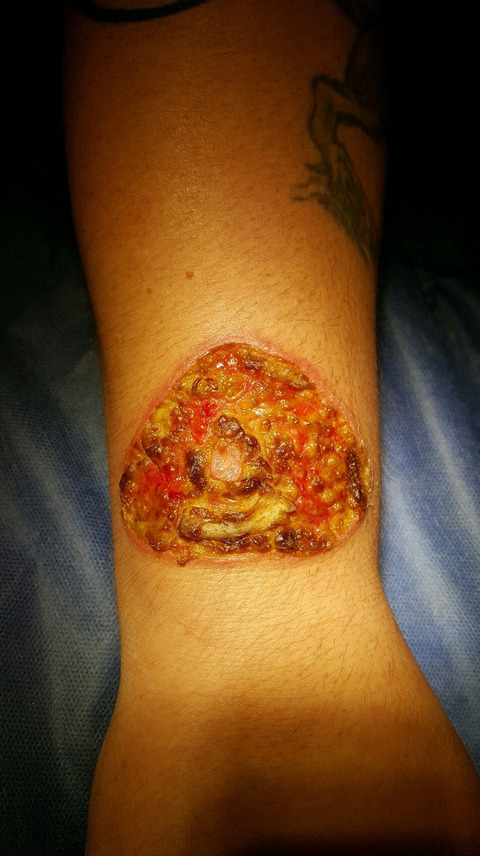
Branding is a type of scarification, a body modification that permanently transforms the skin by causing a visible scar. For centuries, it has been used on the skin of animals and slaves as well as criminals to convey ownership and also as a proof of guilt. More recently (in the 20th and 21st centuries), branding has become a symbol of personal identity, rites of passage, spiritual beliefs, and body decoration in some particular micro-cultures. Different means have been classically used to perform the desired branding designs including electrocautery, laser, chemicals, freezing, or a heated metal stencil. Solar branding is a new concept that involves using a focusing lens and a light source, usually the sunlight, to induce thermal injury. It is an emerging technique to perform body modifications and tattooing. As with other types of branding, solar branding also has its complications which may require surgical excision and grafting. We present a case of an acute skin infection following solar branding body modification, which to our knowledge is the first case reported in the literature.
Non-Hodgkin lymphoma presenting as acute pancreatitis: A rare occurrence
- Pages: 107-109
- First Published: 20 November 2018
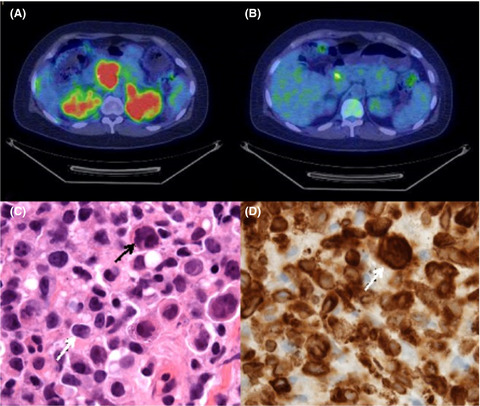
F18-FDG PET and renal biopsy findings consistent with diffuse large B-cell lymphoma. A: Widespread abdominal organ involvement prior to therapy. B: Significant interval improvement in disease burden after 2 cycles of CHOP. C: Kidney mass biopsy showing lymphoid cells with large nuclei, irregular nuclear contours, prominent nucleoli and modest amounts of cytoplasm (white arrow) with scattered forms containing very large, pleomorphic nuclei (black arrow) (hematoxylin & eosin stain, 100x). D: Tumor cells positive for CD79a (white arrow) (CD79a immunostain, 100x).
Surgical repair of a depressed, comminuted fracture of the zygomatic process of the frontal bone using a locking compression plate in a Thoroughbred colt foal
- Pages: 110-114
- First Published: 20 November 2018
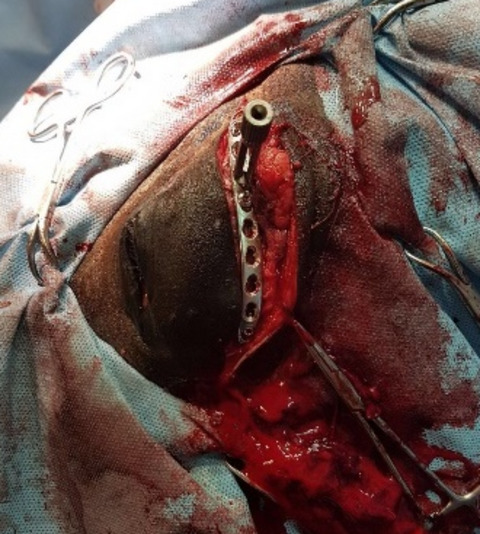
This case report demonstrates the use of a 10-hole 2.7-mm locking compression plate (LCP) to repair a depressed, comminuted fracture of the zygomatic process of the frontal bone, in a foal. LCP fixation resulted in excellent cosmesis. The use of LCP fixation in this region has not been previously described.
Fatal right-sided heart failure due to leukostasis in a patient with leukemic transformation of myelodysplastic syndrome
- Pages: 115-119
- First Published: 20 November 2018

We document leukostasis leading to acute fatal right-sided heart failure. In patients presenting with leukostasis and cardiopulmonary symptoms, clinicians should aim to assess for cardiac involvement, that is, by ECG and acute echocardiogram, since early recognition of right ventricular disease may provide an opportunity to treat this potentially reversible condition.
Superior vena cava obstruction post laparoscopic cholecystectomy: A case report
- Pages: 120-122
- First Published: 20 November 2018
Case report of granular acute lymphoblastic leukemia and review of the literature
- Pages: 123-127
- First Published: 21 November 2018
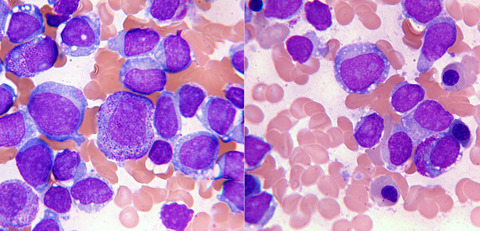
Granular acute lymphoblastic leukemia (ALL) is a rare variant of the disease that is associated with a lower remission rate to standard induction chemotherapy. Flow immunophenotyping, cytogenetics, and molecular diagnostics should be utilized to confirm the diagnosis of ALL versus acute myeloid leukemia (AML) in order to provide appropriate management.
Polymyositis with antisynthetase syndrome presented with lobular panniculitis: A case report
- Pages: 128-130
- First Published: 22 November 2018
Combined hemophagocytic syndrome and thrombotic microangiopathy due to mixed infection with influenza virus and pneumococcal pneumonia
- Pages: 131-134
- First Published: 22 November 2018
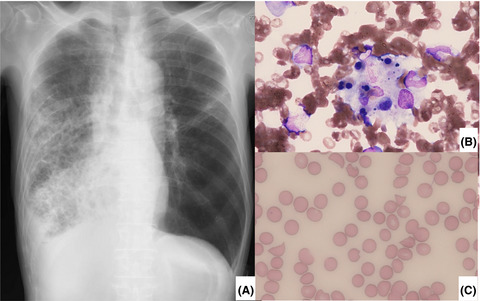
Development of hemophagocytic syndrome and thrombotic microangiopathy due to community-acquired pneumonia is rare, but delayed management of these complications can lead to a poor prognosis. Infection by both Streptococcus pneumoniae and influenza virus can cause these complications; thus, physicians should pay attention to them when treating influenza-associated pneumococcal pneumonia.
Use of direct oral anticoagulants in the treatment of left ventricular thrombi: A tertiary center experience and review of the literature
- Pages: 135-142
- First Published: 22 November 2018

Direct oral anticoagulants can potentially provide a more convenient oral alternative for the management of left ventricular thrombi than Warfarin. These medications do not require frequent monitoring and have less drug-drug interactions. Randomized controlled trials are needed to further demonstrate their efficacy and safety in this setting.
Sleep apnea: Do not forget to inspect the throat!
- Pages: 143-145
- First Published: 22 November 2018
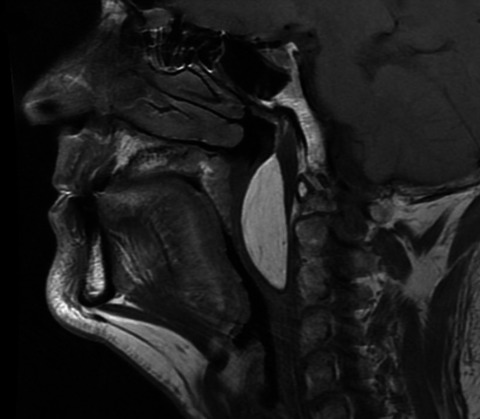
Obstructive sleep apnea syndrome (OSAS) is a widespread and underdiagnosed disease. Causes are mostly related to obesity and anatomy with oro-pharyngeal narrowing. Parapharyngeal tumors are rare but can easily be treated. Careful oro-pharyngeal examination in OSAS patient is cheap, easy to perform by non-ENT specialists, quick, and avoids inadequate treatment.
Isolated lichen planus of lip: Diagnosis and treatment monitoring using dermoscopy
- Pages: 146-148
- First Published: 22 November 2018
Recurrent hydrothorax in a child on peritoneal dialysis: A case report and review of the literature
- Pages: 149-151
- First Published: 25 November 2018

Hydrothorax is a serious complication of peritoneal dialysis, and it may be resolved by deferring dialysis or decreasing dialysate volumes. Repeat thoracentesis is not well tolerated in children. Therefore, if conservative measures fail, thoracotomy or thoracoscopy with endoscopic repair of associated diaphragmatic eventration should be considered before reinstating peritoneal dialysis.
A 39-year-old man with schizophrenia and tuberous sclerosis with a delusion of being a pregnant woman—A case report
- Pages: 152-154
- First Published: 25 November 2018

We present a case of a married man, known case of schizophrenia and tuberous sclerosis, who presented with delusion of pregnancy along with other psychotic symptoms. This type of delusion can be attributed to wish fulfillment as the patient has been married for seven years without being able to conceive.
Toll-like receptor 4 promoter polymorphisms in a familial mediterranean fever patient with asymptomatic bacteriuria
- Pages: 155-159
- First Published: 25 November 2018

A periodic fever, due to inherited inflammatory disorders, can be misdiagnosed as a common infection, when a possible pathogen is detected from a patient. TLR4 SNPs that are responsible for asymptomatic bacteriuria might disturb the pathophysiology of familial Mediterranean fever without MEFV mutations.
Intravenous immunoglobulin for acute hemorrhagic leukoencephalitis refractory to plasmapheresis
- Pages: 160-163
- First Published: 28 November 2018
A rare case of hepatosplenic gamma-delta T-cell lymphoma and secondary hemophagocytic lymphohistiocytosis
- Pages: 164-169
- First Published: 28 November 2018
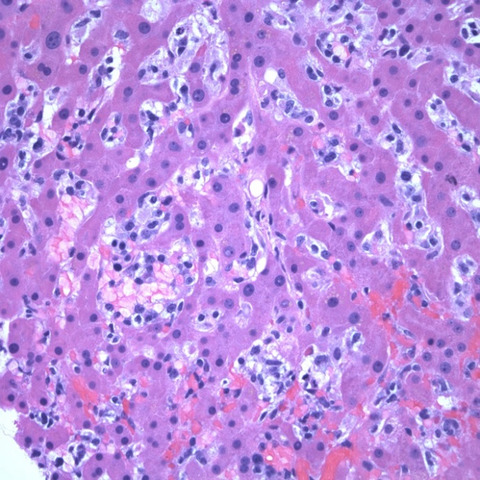
Hepatosplenic gamma-delta T-cell lymphoma with concurrent hemophogocytic lymphohistiocytosis is a rare but well-recognized clinical scenario, associated with a grim prognosis. Clinicians must be aware of this aggressive type of lymphoma so that a prompt diagnosis can be made with timely initiation of systemic therapy and referral for bone marrow transplant.
A rare case of immune thrombocytopenia secondary to breast cancer
- Pages: 170-174
- First Published: 28 November 2018
Abdominal pain in combination with an unexplained hemolytic anemia are crucial signs to test for paroxysmal nocturnal hemoglobinuria: A case report
- Pages: 175-179
- First Published: 04 December 2018
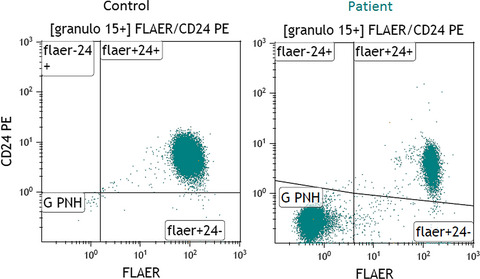
Paroxysmal nocturnal hemoglobinuria (PNH), a rare benign hematological disorder, presents with a wide variety of clinical symptoms. A direct Coombs-negative hemolytic anemia combined with an increased LDH level are signs to test for PNH. Follow-up does not need any microscopic review's only flow cytometric PNH clone size.
Immunologic characterization of patients with chronic mucocutaneous candidiasis disease
- Pages: 180-185
- First Published: 04 December 2018
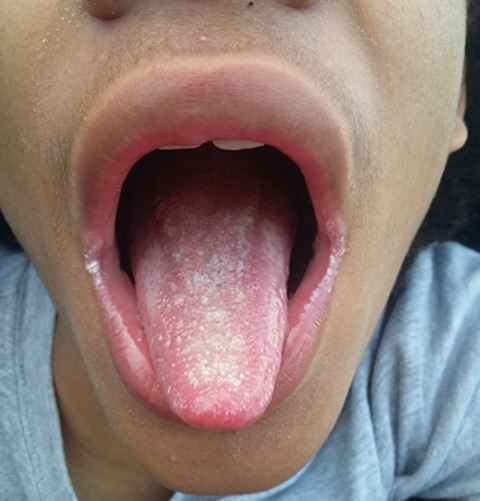
Even if initial immunologic screen is normal, a high index of suspicion for immunodeficiency should guide the evaluation and management of patients with recurrent episodes of mucocutaneous candidiasis. Although rare, a diagnosis of chronic mucocutaneous disease should always be considered in order to improve their outcome.
Cerebral sinovenous thrombosis as a complication of otitis media
- Pages: 186-188
- First Published: 04 December 2018
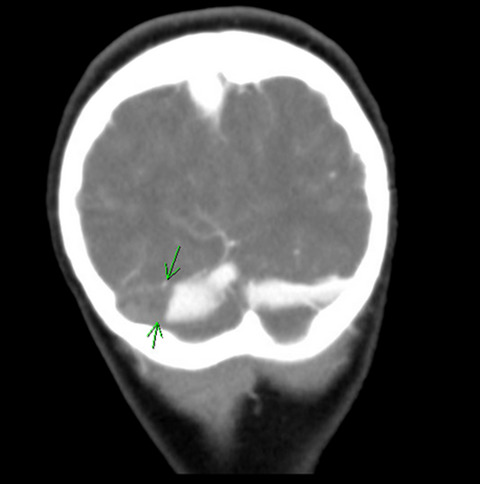
Otogenic cerebral sinovenous thrombosis (CSVT) is a rare complication of otitis media and associated with significant morbidity and mortality. Classic clinical signs of mastoiditis (pain, swelling, and erythema posterior to the pinna) are not always present at presentation. Treatment of otogenic CSVT consists of conservative surgery, antibiotics, and anticoagulation.
Angiolymphoid hyperplasia with eosinophilia with clinical pictures of keratoacanthoma: A rare case report
- Pages: 189-192
- First Published: 04 December 2018
Superficial siderosis due to filum terminale tumor: An uncommon cause of cranial nerve dysfunction
- Pages: 193-195
- First Published: 05 December 2018
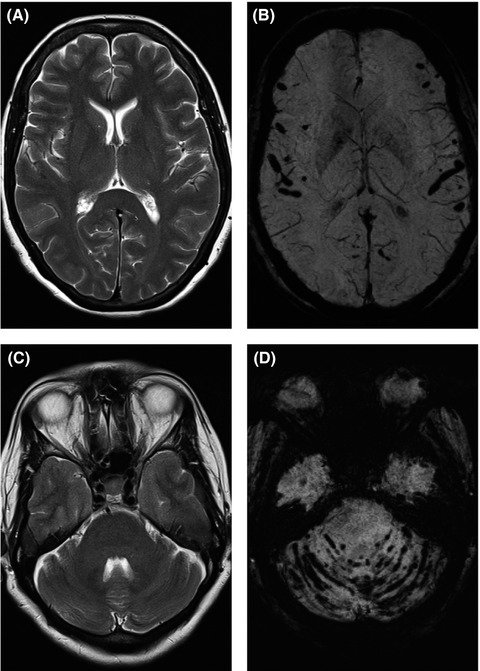
If superficial siderosis is suspected based on clinical presentation, susceptibility weighted imaging should be undertaken in addition to standard MRI sequences as it is more sensitive than T2 weighted imaging. Once diagnosed, imaging of the entire brain and spine must be undertaken to assess for an underlying cause.
Eltrombopag in long-term management of pediatric thrombocytopenia
- Pages: 196-201
- First Published: 10 December 2018
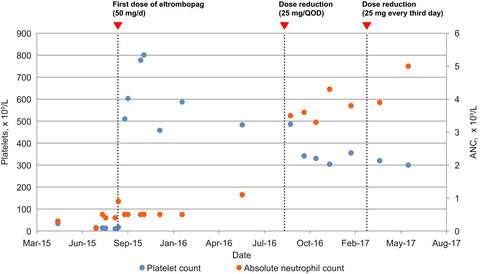
Eltrombopag is a thrombopoietin receptor agonist that may be effective in a broad range of thrombocytopenias of distinct etiology. We have observed rapid, robust, and sustained responses to eltrombopag in two young patients with refractory thrombocytopenia, one with primary immune thrombocytopenia and the other with Evans syndrome.
A case report of hamartomatous polyposis in an individual with Neurofibromatosis type 1
- Pages: 202-205
- First Published: 11 December 2018
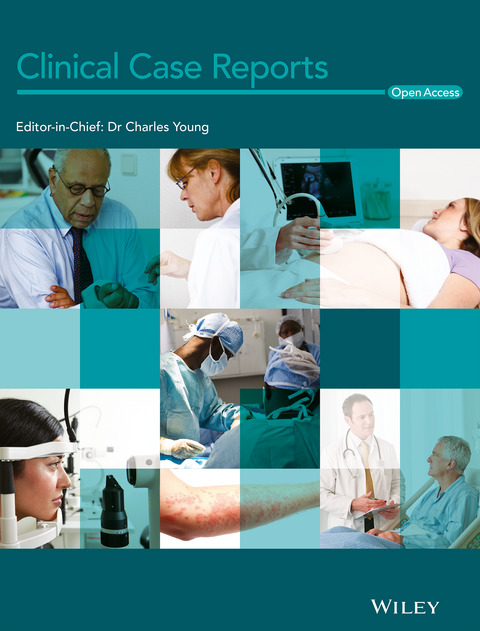
Even in well-described genetic syndromes, such as neurofibromatosis type 1, expansion of the phenotype should be considered as a possible explanation for atypical presentations. However, it is critical to complete the evaluation for a potential dual diagnosis, as there could be significant prognostic and management implications.
Three cases of adjacent segment disease post-posterior spinal fusion, treated successfully by oblique lateral interbody fusion: A clinical series
- Pages: 206-210
- First Published: 13 December 2018

The incidence of spinal fusion surgery and associated adjacent segment disease (ASD) is steadily increasing. We report three cases of ASD after posterior fixation, treated by oblique lateral interbody fusion (OLIF). All cases had a good postoperative course. Altogether, OLIF surgery may be a viable option for treating ASD.
A 14-year-old in heart failure with multiple cardiomyopathy variants illustrates a role for signal-to-noise analysis in gene test re-interpretation
- Pages: 211-217
- First Published: 14 December 2018

Variants of unknown significance in cardiomyopathic disease should be analyzed systematically based on the prevalence of the variant in the population compared to prevalence of disease, evidence that other variants in the gene are pathologic, consistency of prediction software on pathogenicity, and the current clinical consensus.
Cutaneous metastasis of renal cell carcinoma: Fine needle aspiration provides rapid diagnosis
- Pages: 218-221
- First Published: 14 December 2018
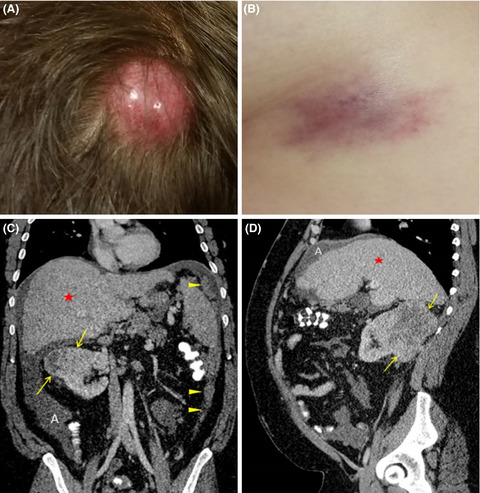
The diagnosis of cutaneous metastasis of renal cell carcinoma is challenging in a young person in absence of a prior history of cancer. In such situation, fine needle aspiration alone as a minimally invasive procedure can provide rapid, accurate and cost effective diagnosis, even in case of unknown primary.
CLINICAL IMAGES
Oral maxillary exostosis
- Pages: 222-223
- First Published: 11 November 2018
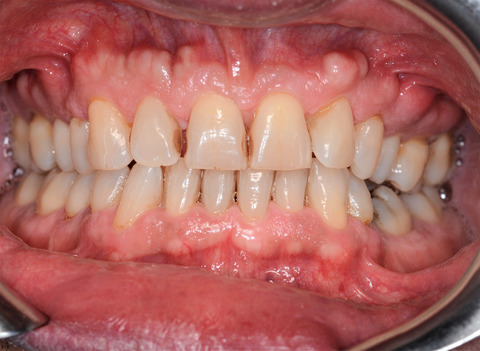
Oral maxillary exostoses are proliferating bone lesions with an unknown etiology occurring on the cortical plates both in the maxilla and in the mandible of young individuals, showing a typical slow but continuous enlargement. No treatment is usually required unless they create esthetic or functional limitations during follow-up; the biopsy is needed only for doubtful lesions. Furthermore, it is mandatory to collect an accurate familiar history of patients affected by exostosis, especially when occurring with atypical clinical presentation, in order to exclude or prevent potentially associated systemic diseases.
Late T-wave inversion following resolution of non-ischemic acute pulmonary edema
- Pages: 224-226
- First Published: 12 November 2018

Electrocardiographic (ECG) changes occurring several hours after the onset of acute cardiogenic pulmonary edema have been seldom described. The proposed explanatory mechanisms are various and not fairly established. In the absence of significant coronary artery disease, these ECG abnormalities could be attributed to mechanisms implicated in coronary microcirculatory dysfunction.
Hepaticocholecystic duct: A pitfall of cholecystectomy
- Pages: 227-228
- First Published: 14 November 2018
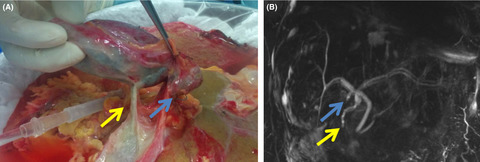
The anatomical variations of accessory biliary ducts account for up to 2% of the population. The two types of ducts are the: subvescical and hepatocholecystic. The knowledge of such variations is extremely important during cholecystectomy in order to avoid possible postoperative complications such as biliary injury or choleperitoneum.
Unrecognized staphylococcal vertebral osteomyelitis leading to fatal outcome in a previously healthy patient
- Pages: 229-230
- First Published: 20 November 2018
Convexity subarachnoid hemorrhage presented with loss of consciousness
- Pages: 231-232
- First Published: 22 November 2018
Point-of-care renal ultrasound: Interpret with care
- Pages: 233-235
- First Published: 22 November 2018
Lambda sign in sarcoidosis using PET/CT
- Pages: 236-237
- First Published: 22 November 2018
An alternative technique for downsizing a modified Blalock-Taussig shunt
- Pages: 238-239
- First Published: 28 November 2018
Empyema caused by transdiaphragmatic extension of pyogenic liver abscess
- Pages: 240-241
- First Published: 04 December 2018
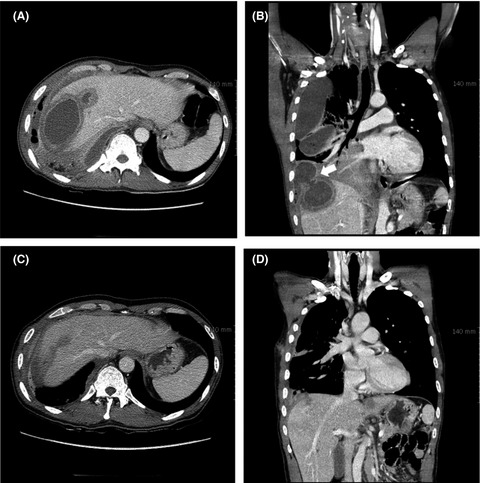
Empyema caused by transdiaphragmatic extension of pyogenic liver abscess is a very rare complication of liver abscess. Empyema patients with unclear respiratory symptoms should be evaluated for the presence of underlying liver abscess. Effective drainage with appropriate antibiotic use is an essential part of successful treatment.
Right main bronchus rupture due to blunt chest trauma
- Pages: 242-243
- First Published: 04 December 2018
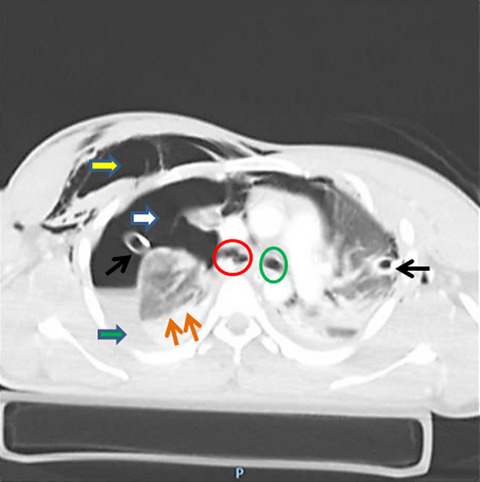
Bronchial rupture following major blunt chest trauma should be suspected in every case of massive and persistent air leak through the intercostal drain tube. Chest radiogram offers indirect signs, while chest CT scan demonstrates specific signs highly suggestive for this extremely rare tracheobronchial injury. Bedside bronchoscopy confirms the diagnosis.
An uncommon cause of loss of vision in a dialysis patient with lupus
- Pages: 244-245
- First Published: 12 December 2018

Optic neuropathy is an uncommon finding in dialysis patients and has been associated with uremia, ischemia (arteritic and nonarteritic), drugs (isoniazid, ethambutol), infections (tuberculosis), and intracranial hypertension. Inflammatory optic neuritis associated with lupus is relatively rare, but clinicians need to be aware of this condition and obtain urgent ophthalmology consultation.






